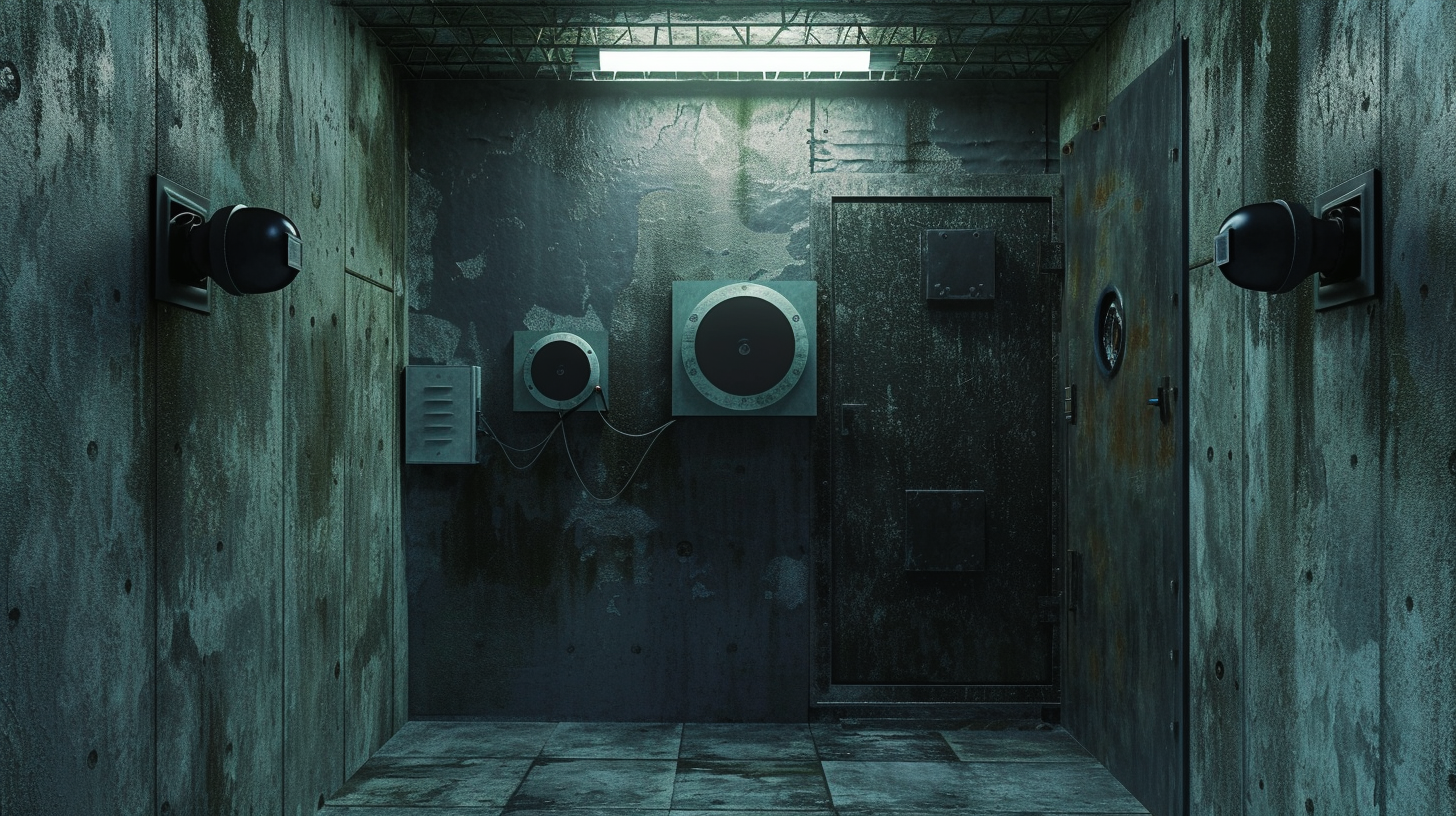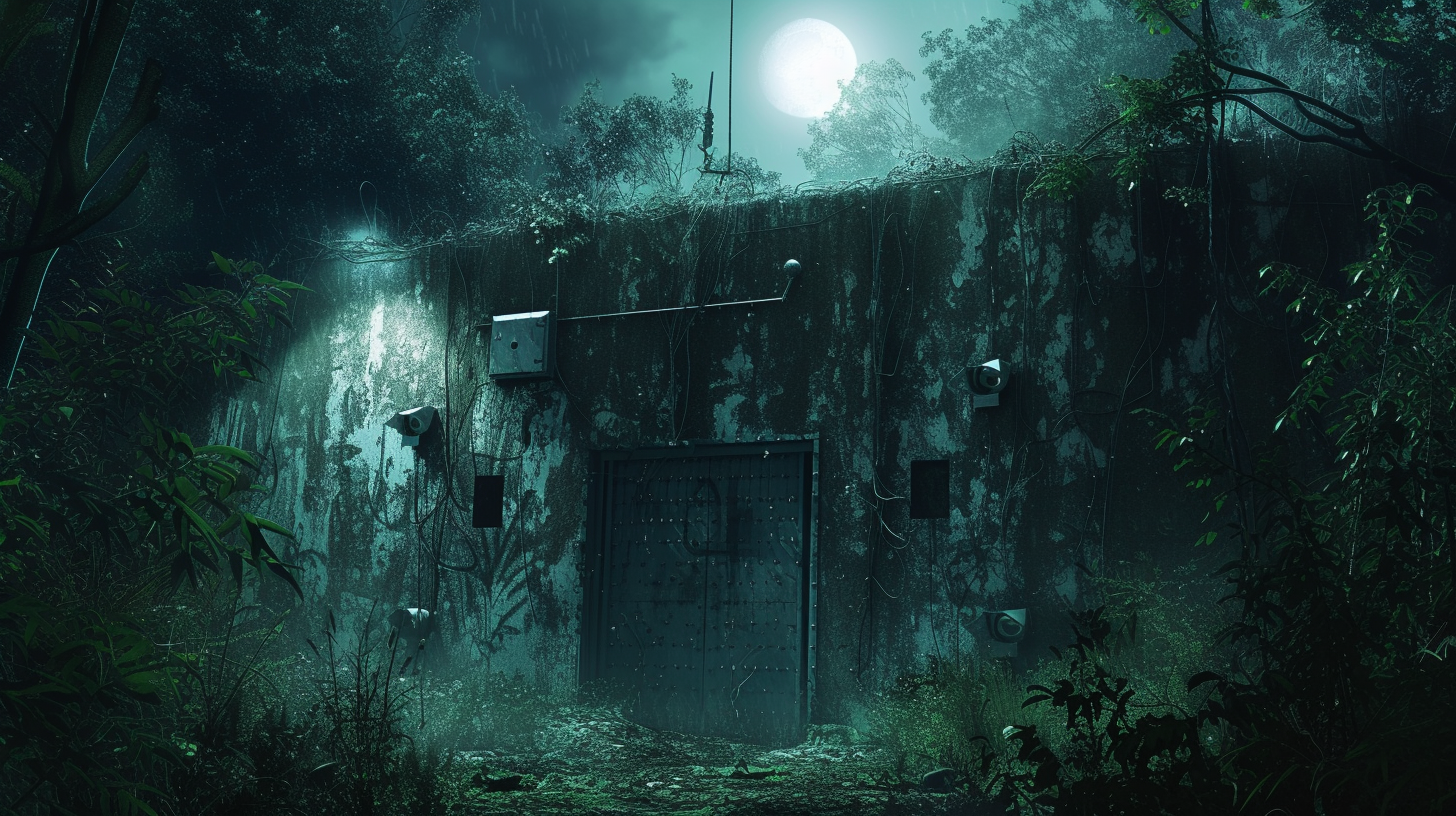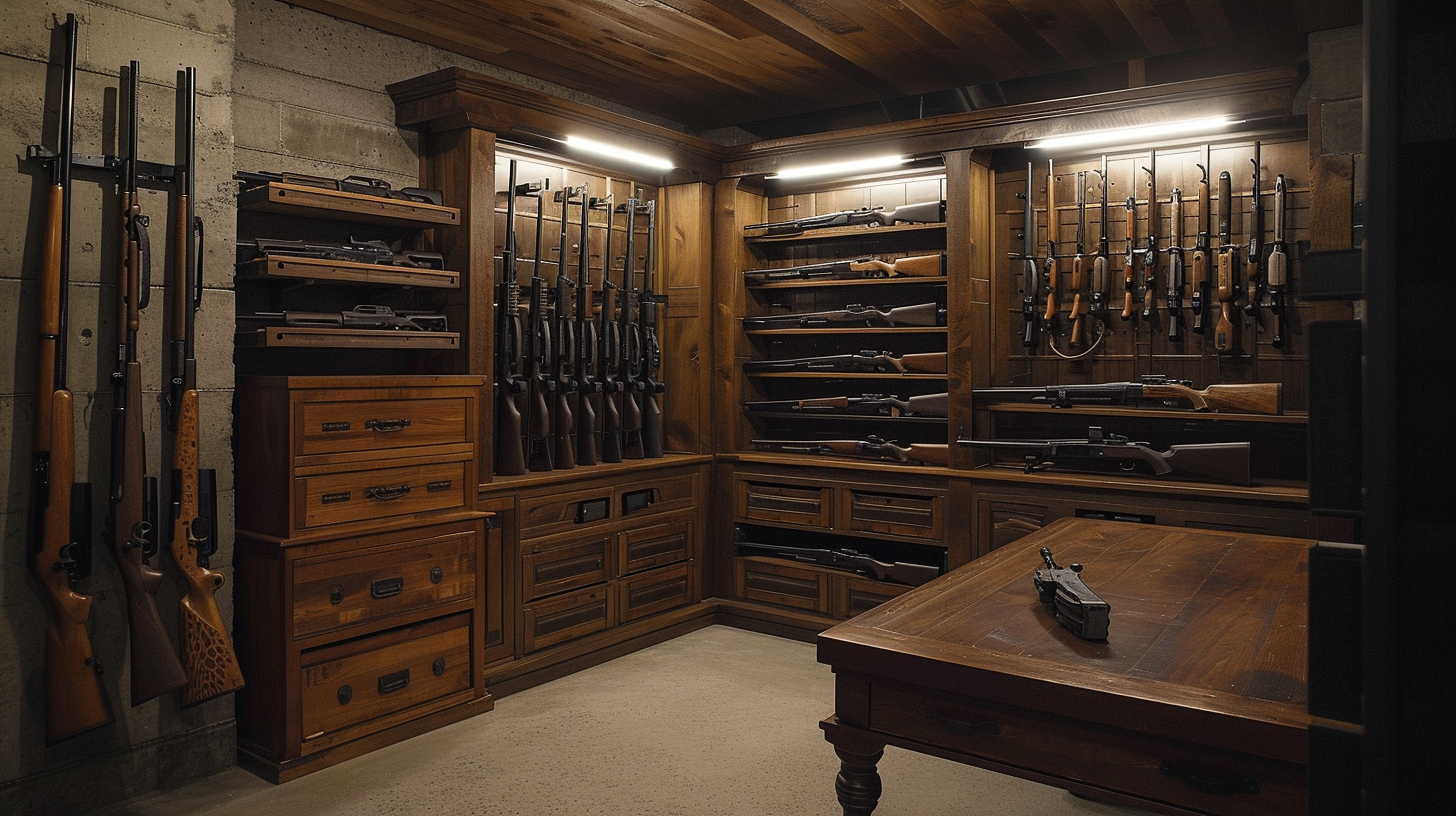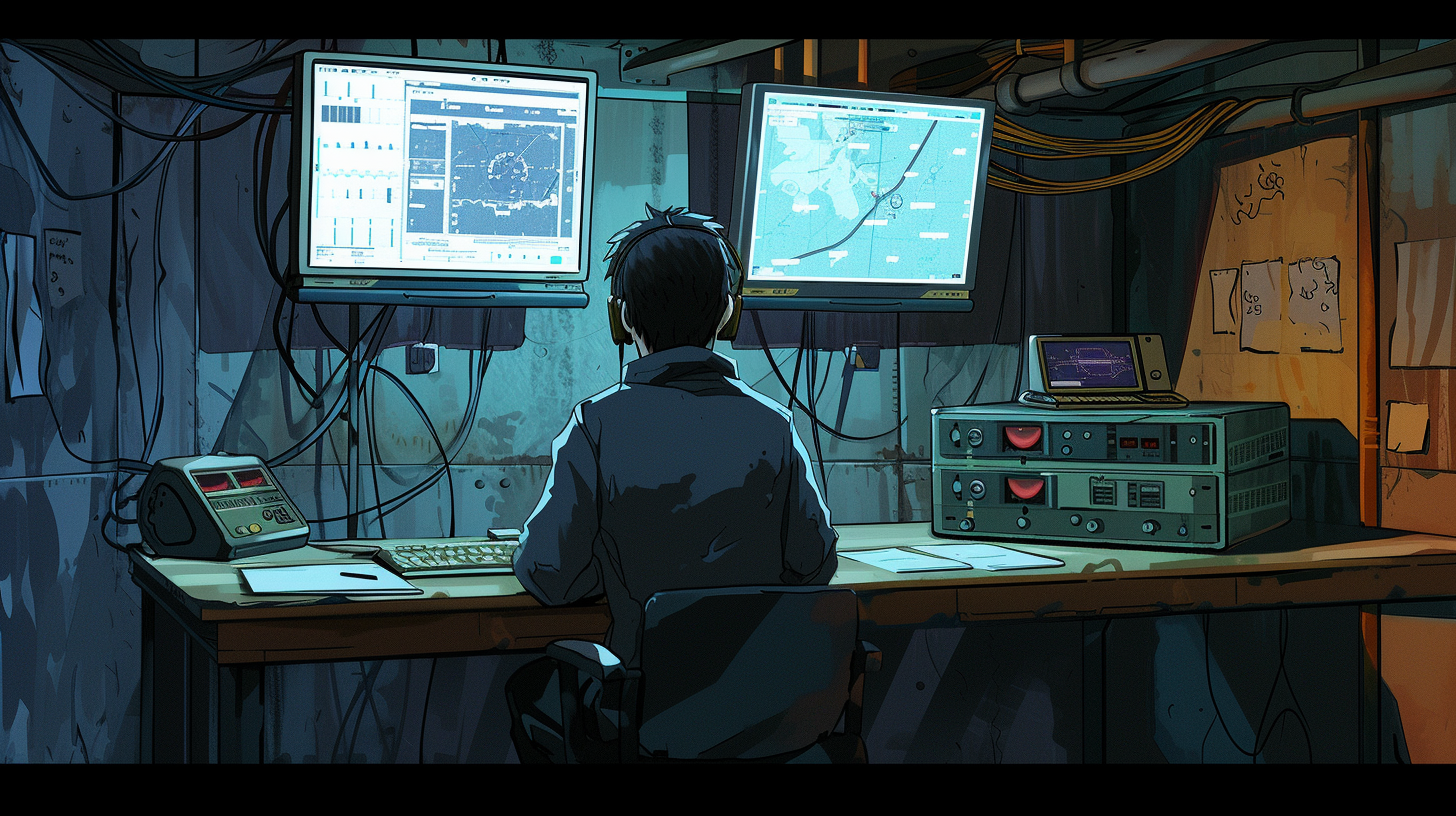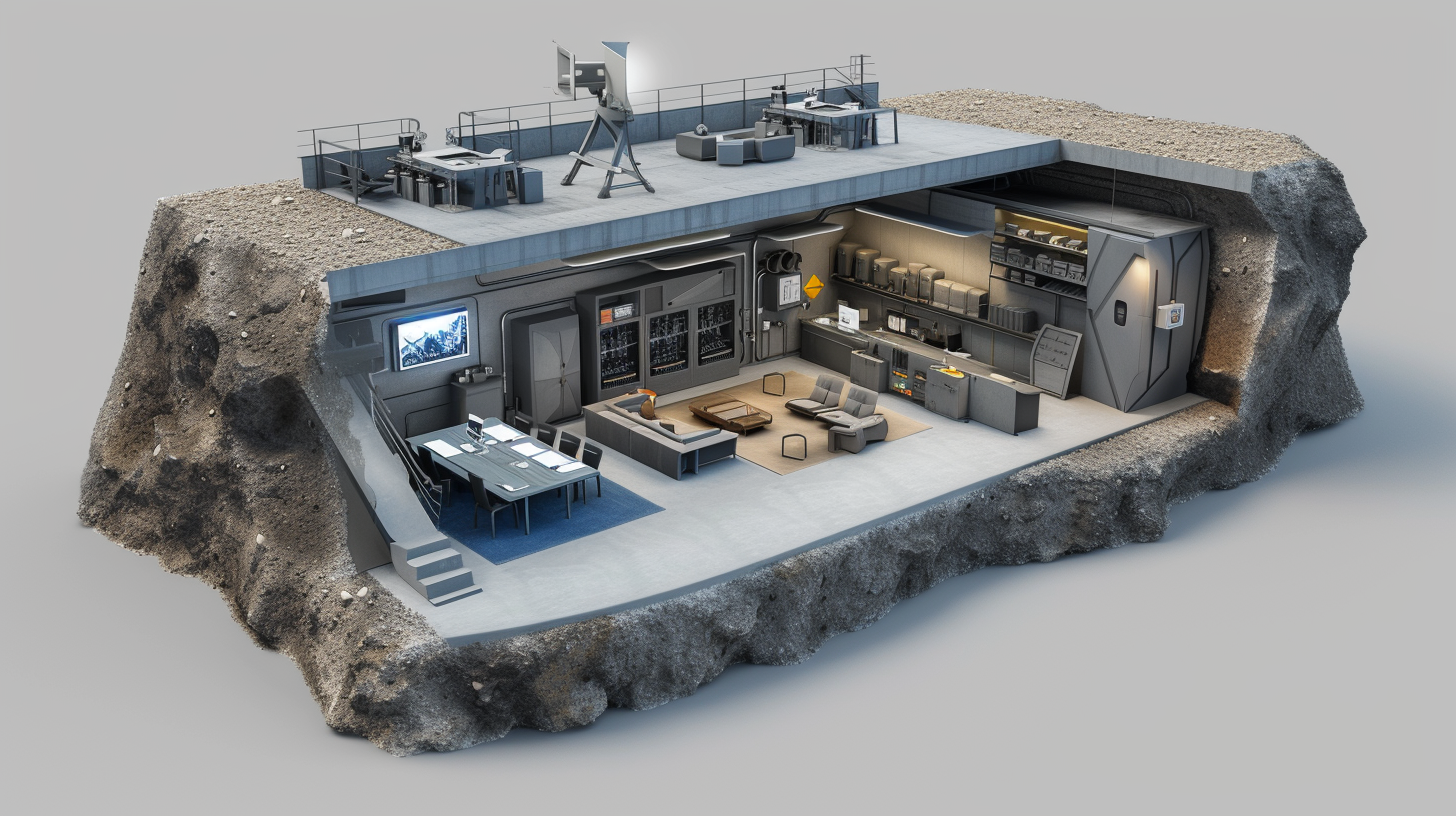In the game of chess, your underground bunker is the king, and it’s your job to protect it from being checkmated by unforeseen threats and intruders. You’ve decided to fortify your last stand, but where do you start?
Conducting a comprehensive risk analysis is your opening move, laying the foundation for a strategy that encompasses everything from blast doors and reinforced walls to sophisticated surveillance and biometric access controls.
But it’s not just about the physical and technological defenses; it’s also about preparing for emergencies with stockpiles, communication channels, and clear protocols.
As you ponder your next move, consider how you’ll balance the complexity of advanced security measures with the practicality of maintaining them.
The game is afoot, and your next decision could be the difference between safety and vulnerability.
Let’s explore how you can ensure your bunker remains an impregnable fortress against the myriad of threats lurking in the shadows.
Key Takeaways
- Prioritize access control with biometric authentication and personalized security measures to enhance bunker security against intruders.
- Install a comprehensive surveillance system with high-resolution cameras, motion sensors, and night vision capabilities for effective perimeter defense and intrusion detection.
- Implement strict access control protocols with biometric authentication and keycard access for secure entry into different areas within the bunker.
- Ensure reliable water supply, well-stocked First Aid kits, proper ventilation systems, and secure storage for weapons and ammunition to support emergency preparedness within the bunker.
Threat Assessment
Before you fortify your underground bunker, it’s crucial to accurately assess the threats you’re up against. Identifying potential risks is your first step in designing a bunker that can withstand attempts at forced entry and ensure your safety. You’ve got to think about the level of security you’ll need. Are you guarding against environmental disasters, home invasions, or something more severe? This will dictate the kind of security features you’ll incorporate.
Access control should be your top priority. Traditional locks won’t cut it. Instead, consider biometric access that ensures only those you’ve authorized can enter. It’s a way to personalize your bunker’s security, making it nearly impossible for intruders to gain access.
Next, think about the physical barriers. Blast doors aren’t just for aesthetic appeal; they’re a formidable line of defense against explosions or forced entry. Their design and material are crucial in determining how well they’ll stand up against threats.
In essence, your bunker’s security features, from biometric access to blast doors, must be tailored to the specific threats you’ve identified. It’s not just about having security; it’s about having the right kind of security for what you’re facing.
Perimeter Defense
As you consider the security of your underground bunker, don’t overlook the importance of Perimeter Defense.
Installing a comprehensive surveillance system along with intrusion detection measures forms the first line of defense against potential threats.
Surveillance System Installation
Installing perimeter defense surveillance systems enables you to monitor and record surrounding activities, ensuring robust security for your underground bunker.
For your bunker’s security and safety, integrating advanced surveillance technology, such as high-resolution cameras with night vision and motion sensors, is crucial. These systems, connected to central monitoring stations, allow for real-time assessment and quick response to potential threats.
Strategic placement around the entrance and exit points, coupled with secure digital recording setups, ensures only authorized personnel have access to live feeds and archived footage.
Regular maintenance of these systems is essential to prevent any lapses in security.
Moreover, effective communication methods between the surveillance team and bunker occupants bolster the overall safety of underground bunkers, making surveillance system installation a critical component of bunker security.
Intrusion Detection Measures
While surveillance systems play a crucial role in monitoring, bolstering your bunker’s security with intrusion detection measures ensures a comprehensive defense against unauthorized access. To protect your underground emergency shelter effectively, consider integrating a variety of security enhancements. These measures not only deter but also actively defend your bunkers from potential intruders:
- Intrusion Detection Systems: Incorporate motion sensors and CCTV cameras to detect any unauthorized movement around your shelter.
- High-Security Perimeter: Utilize high-security fencing, fortified walls, and vehicle barriers to create a formidable first line of defense.
- Electronic Countermeasures: Implement electrified fencing and security lighting to discourage any attempts at breaching your perimeter.
- Real-Time Monitoring: Integrate these systems with a central monitoring station for immediate assessment and response, ensuring your bunker remains a secure refuge in any emergency.
Access Control
To ensure your bunker remains impregnable, consider integrating biometric authentication and keycard access for secure entry. These technologies not only fortify your underground shelter but also ensure that access is granted only to authorized individuals. By implementing different levels of access to various areas within the bunker, you’re tailoring security measures to the bunker’s purpose and the specific needs of its inhabitants.
Combining multiple access control methods can significantly enhance security. For instance, while biometric authentication provides a high level of security by verifying an individual’s unique physical characteristics, keycard access can offer a quick and efficient way to manage entry during high-stress situations, such as an emergency. This dual-layered approach ensures that your bunker’s security is robust and adaptable to various scenarios.
It’s crucial to restrict and monitor access within the bunker’s perimeter. Regular assessment and updates of access control protocols are essential for maintaining maximum security. This includes reviewing the effectiveness of the bunker’s ventilation system in an emergency situation, ensuring it remains secure against external threats.
Surveillance Systems
As you secure your underground bunker, it’s crucial to consider how you’ll keep an eye on things. Optimal placement of cameras ensures you won’t miss any blind spots, and integrating motion detection can alert you to unauthorized presence swiftly.
These steps not only enhance your bunker’s security but also provide peace of mind knowing every corner is monitored.
Optimal Camera Placement
Ensuring your bunker remains secure starts with strategically placing surveillance cameras at every entry, exit, and vulnerable spot. In underground shelters or bomb shelters, designed to protect against nuclear attack, chemical weapons, or other survival situations, optimal camera placement is crucial. Here’s how you can maximize security:
- Entry and Exit Points: Install cameras to monitor all movement in and out.
- Blind Spots: Position cameras to cover vulnerable areas within the shelter.
- Critical Infrastructure: Oversee storage and essential resources to ensure their security.
- Low-Light Surveillance: Utilize night vision capabilities for continuous protection.
In the case of an emergency, these steps ensure you’re prepared, keeping your bunker safe from intruders and threats.
Motion Detection Integration
Building on the foundation of optimal camera placement, integrating motion detection enhances your bunker’s surveillance capabilities. Utilizing advanced technology, such as high-resolution cameras with night vision, alongside motion sensors and infrared tech, you’re setting up a fortress that not even the slyest intruder can breach unnoticed.
By syncing these motion detectors with your surveillance systems, you establish a secure digital recording setup. Access to live feeds and archived footage is strictly limited to authorized personnel, ensuring that your bunker remains a bastion against unwelcome guests.
Moreover, integrating motion detection with intrusion detection systems and biometric access controls fortifies your bunker, making it impervious to threats from the outside, be it human intruders or natural disasters. Regular assessments keep your systems sharp, ready to protect your sanctuary at a moment’s notice.
Emergency Protocols
To effectively respond to emergencies, you’ll need to familiarize yourself with the bunker’s comprehensive emergency protocols, which include clear communication methods and a stockpile of essential sustenance items. It’s crucial to make sure everyone in the shelter knows the procedures inside and out.
Here are key components to consider for your emergency protocols:
- Water Supply: Ensure you have a reliable water supply, planning for at least one gallon of water per person, per day. This is vital for both hydration and sanitation.
- First Aid: Keep a well-stocked First Aid kit and ensure that everyone knows how to use it. Regular training on basic medical procedures can save lives.
- Ventilation and Air Quality: Maintain systems for Ventilation and Air purification. In a crisis, ensuring a supply of fresh air is as crucial as having enough water and food.
- Safe Rooms: Designate Safe Rooms within the bunker that are especially secured against threats. These rooms should be easily accessible and equipped to support life for extended periods without external aid.
Weapon and Ammunition Storage
As you prepare your underground bunker for any emergency, it’s critical to consider how you’ll securely store weapons and ammunition. Creating a secure area for weapon and ammunition storage is not just a good idea; it’s essential to maintaining high levels of safety and readiness. You’ll want to use fireproof and secure containers or safes, ensuring they’re well-organized for quick access while keeping them out of the wrong hands with strict access control measures.
| Need | Strategy |
|---|---|
| Quick Access | Organize for efficiency & maintenance |
| Unauthorized Access | Implement strict access control |
| Fire and Theft | Use fireproof and secure containers |
Remember to regularly inspect and maintain your firearms and ammunition. This not only ensures they are ready when you plan to use them but also helps to prevent accidents. It’s a good idea to keep medical supplies nearby as a precaution. Lastly, take care not only in how you store these items but also in how you manage them—inventory management is key to staying prepared and ensuring your bunker remains a safe haven.
Communication Strategies
Having addressed the importance of securely storing weapons and ammunition, let’s now focus on ensuring effective communication strategies within your underground bunker. Communication is vital for coordination, morale, and survival. Here’s how you can maintain contact both within the bunker and with the outside world:
- Establish a clear communication plan that includes roles and responsibilities for each member of your bunker community. This ensures everyone knows how to share information and report issues or threats.
- Utilize various communication technologies. Depend on more than one form of technology to stay connected. Consider:
- Landlines, if accessible for local communication.
- Satellite phones for long-distance calls without relying on local infrastructure.
- Emergency radios, particularly ham radios, which can be invaluable for contacting the outside world, even in severe conditions.
- Prioritize mental health and socialization. Keeping morale high is as crucial as any security measure. Encourage regular social activities and open communication to support each other’s well-being.
- Implement surveillance and security measures. Use alarms, cameras, and secure entrances/exits to monitor your surroundings. This includes keeping an eye on air ventilation systems, water tank levels, and supplies like bottled water and purification tablets.
Air Quality and Ventilation
Ensuring your bunker has proper air quality and ventilation is crucial for everyone’s health and safety. Let’s know, maintaining a breathable environment underground isn’t just about comfort; it’s about survival, especially if you’re hunkering down for an extended amount of time. Whether you’re preparing for a natural disaster or the unthinkable aftermath of nuclear war, understanding the basics of bunker air quality is something you need to know.
First off, install a reliable ventilation system to prevent the buildup of harmful gases and ensure stale air doesn’t become a problem. Remember, nuclear weapons aren’t the only threat; the lack of fresh air can be just as deadly. Alongside, equip your bunker with air filtration systems to remove pollutants and maintain clean air quality, ensuring a safer environment for everyone inside.
Regular inspections and maintenance of your ventilation equipment are non-negotiable. This ensures everything operates efficiently, particularly during extended periods underground. And don’t forget to consider backup ventilation options for power outages or equipment failure.
Lastly, installing carbon monoxide detectors and air quality monitoring devices will help keep the air in your bunker safe, making sure you’ve got a reliable water source and air you can breathe, no matter what’s happening above ground.
Conclusion
In wrapping up, ensuring your underground bunker’s security is paramount. You’ve got to assess potential threats, fortify the perimeter, and implement strict access control.
Don’t skimp on state-of-the-art surveillance and always have emergency protocols ready. Secure your weapons and ammo safely, and keep communication strategies sharp.
Lastly, never underestimate the importance of air quality and ventilation for long-term safety. By taking these steps, you’ll significantly boost your bunker’s defense against any intruder or threat.

